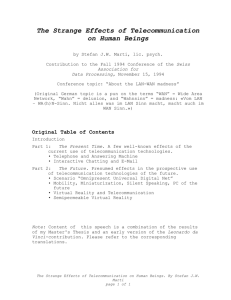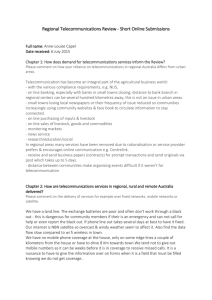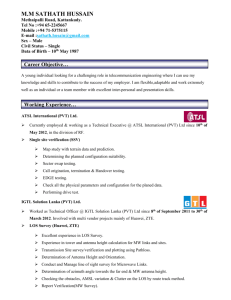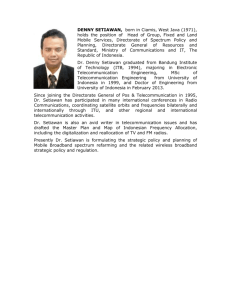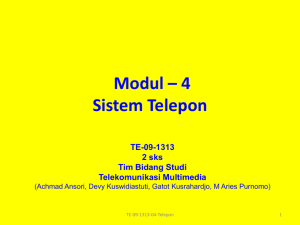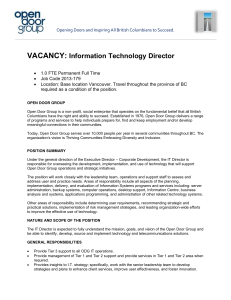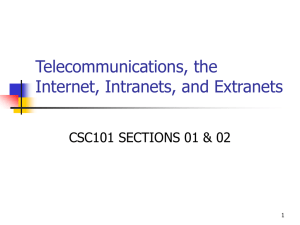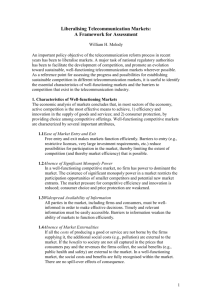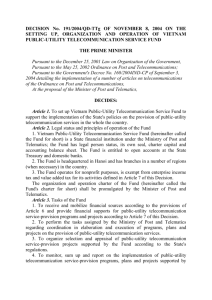Telecommunication facilities
advertisement
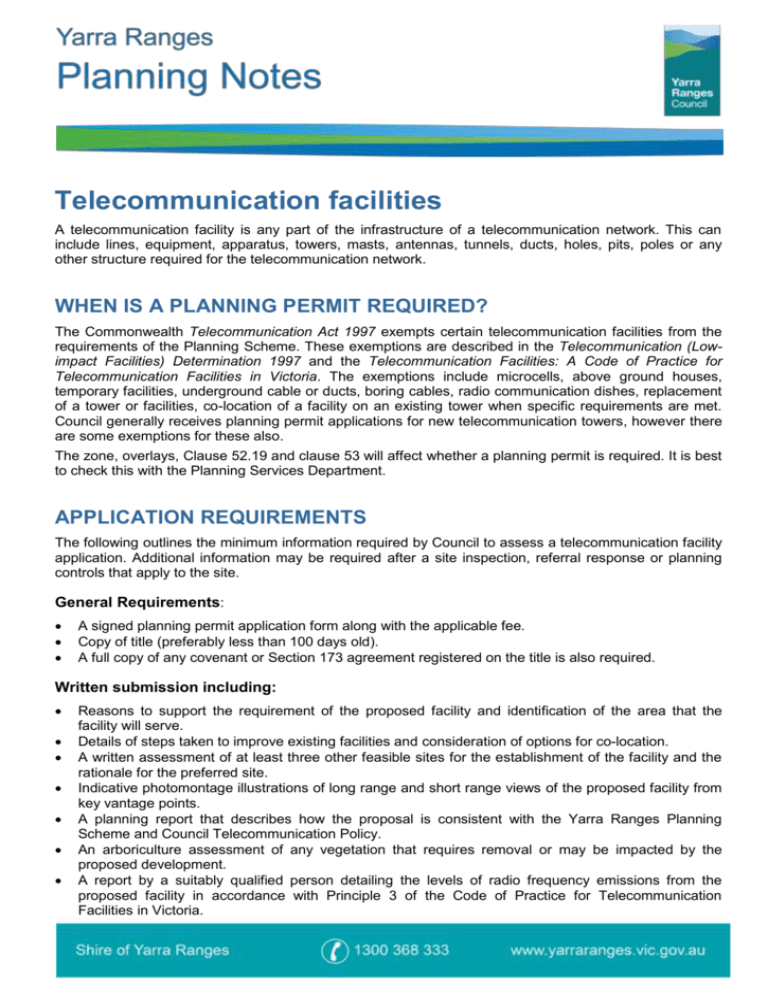
Telecommunication facilities A telecommunication facility is any part of the infrastructure of a telecommunication network. This can include lines, equipment, apparatus, towers, masts, antennas, tunnels, ducts, holes, pits, poles or any other structure required for the telecommunication network. WHEN IS A PLANNING PERMIT REQUIRED? The Commonwealth Telecommunication Act 1997 exempts certain telecommunication facilities from the requirements of the Planning Scheme. These exemptions are described in the Telecommunication (Lowimpact Facilities) Determination 1997 and the Telecommunication Facilities: A Code of Practice for Telecommunication Facilities in Victoria. The exemptions include microcells, above ground houses, temporary facilities, underground cable or ducts, boring cables, radio communication dishes, replacement of a tower or facilities, co-location of a facility on an existing tower when specific requirements are met. Council generally receives planning permit applications for new telecommunication towers, however there are some exemptions for these also. The zone, overlays, Clause 52.19 and clause 53 will affect whether a planning permit is required. It is best to check this with the Planning Services Department. APPLICATION REQUIREMENTS The following outlines the minimum information required by Council to assess a telecommunication facility application. Additional information may be required after a site inspection, referral response or planning controls that apply to the site. General Requirements: A signed planning permit application form along with the applicable fee. Copy of title (preferably less than 100 days old). A full copy of any covenant or Section 173 agreement registered on the title is also required. Written submission including: Reasons to support the requirement of the proposed facility and identification of the area that the facility will serve. Details of steps taken to improve existing facilities and consideration of options for co-location. A written assessment of at least three other feasible sites for the establishment of the facility and the rationale for the preferred site. Indicative photomontage illustrations of long range and short range views of the proposed facility from key vantage points. A planning report that describes how the proposal is consistent with the Yarra Ranges Planning Scheme and Council Telecommunication Policy. An arboriculture assessment of any vegetation that requires removal or may be impacted by the proposed development. A report by a suitably qualified person detailing the levels of radio frequency emissions from the proposed facility in accordance with Principle 3 of the Code of Practice for Telecommunication Facilities in Victoria. A site plan showing the site and surrounding area drawn to scale (1:100 or 1:200) and fully dimensioned, showing the following features: North arrow Location of the proposed development and associated buildings or structures, and any existing buildings and features on the site and set backs to boundaries. Topographical information of the land, including contours and identification of any features including ridgelines and hilltops. The location of any trees (either on the site or on adjoining properties) which are located within 5 metres of any proposed works or may be impacted by the proposal. Any proposed or existing landscaping. Location of vehicular access and main roads. Identification of any other telecommunication facilities in the area. Location and type of any nearby sensitive uses including dwellings, preschools, primary schools, childcare centres, hospitals, community halls, and residential buildings. Elevation plans, drawn to scale (1:100 or 1:200) and fully dimensioned showing the following features: Maximum height of the facility measured from natural ground level to highest point. External colours and finishes. Location and dimensions of any proposed earthworks to accommodate the slope of the land, cut, fill and retaining walls. DETERMINATION OF APPLICATIONS The planning policies considered in the assessment of applications for telecommunication facilities include: The State Planning Policy Framework and the Local Planning Policy Framework, including the Municipal Strategic Statement and local planning policies. Incorporated Document- Telecommunication Facilities: A Code of Practice for Telecommunication Facilities in Victoria Clause 19.03-4 Telecommunications Clause 52.19 Telecommunication Facility Clause 53.01 Upper Yarra Valley and Dandenong Ranges Region Council’s Telecommunication Facilities Policy ADDITIONAL REFERENCES Yarra Ranges Planning Scheme Incorporated Document- Telecommunication Facilities: A Code of Practice for Telecommunication Facilities in Victoria http://www.dpcd.vic.gov.au/__data/assets/pdf_file/0004/41827/Telecommunications__reissue_2004.pdf Telecommunication (Low-impact Facilities) Determination 1997 www.mcf.amta.org.au/files/Low.Impact.Facilities.Determination.pdf Radiation Protection Standard – Maximum Exposure Levels to Radiofrequency Fields – 3kHz to 300 GHz, Arpansa, May 2002 http://www.arpansa.gov.au/pubs/rps/rps3.pdf Council’s Telecommunication Facilities Policy Upper Yarra Valley & Dandenong Ranges Regional Strategy Plan Mt Dandenong Ridge Area Map World Health Organisation – Electromagnetic fields and public health http://www.who.int/mediacentre/factsheets/fs304/en/index.html Industry Code for the Deployment of Radiocommunications Infrastructure http://www.acma.gov.au/webwr/telcomm/industry_codes/codes/c564.pdf Deployment of Mobile Phone Networks Infrastructure Code FAQ http://www.acma.gov.au/scripts/nc.dll?WEB/STANDARD/1001/pc=PC_1792 2
